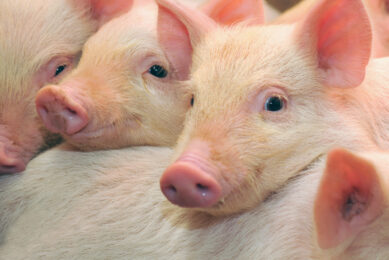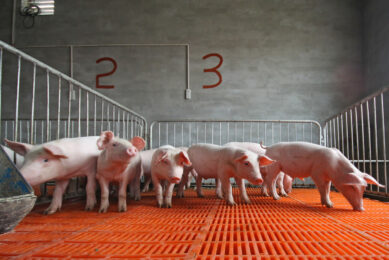Wheat versus maize
Questions whether maize can replace wheat – or the other way round – are frequently asked. Such concerns usually emerge when alternative cereals are priced competitively (due to oversupply or lower quality).
The question whether maize can replace wheat is often asked in major wheat-producing areas (e.g., Canada, Europe) where there is considerable experience in feeding wheat. Similarly, producers in major maize-producing areas (e.g., USA, Latin America) frequently ask whether wheat can replace maize. Such concerns usually emerge when alternative cereals are priced competitively (due to oversupply or lower quality).
There is ample evidence suggesting that properly balanced diets using similar quality wheat or maize will yield similar results, at least in terms of animal performance (see table). Obviously, replacing good quality wheat (or maize) with moldy maize (or wheat rich in arabinoxylans) will fail to produce similar results. Therefore, more emphasis should be placed on quality than nutrient composition when comparing cereals.
Table 1. Feeding wheat or maize to nursery pigs.

Replacing
When replacing wheat for maize the following should be taken into consideration:
• Wheat has less energy (95% of that in maize), more protein (11-12 versus 7-8%), and higher phosphorus bioavailability (50 vs 14%) than maize. Thus, a one-to-one substitution based on weight will produce severe nutrient imbalances.
• Wheat contains certain anti-nutritional factors (arabinoxylans) that could be detrimental to animal performance at high concentrations. In this case, a wheat-specific enzyme (xylanase) is recommended for piglet diets.
• Finely, ground wheat increases pellet durability (but pellets also become harder), decreases feed flow in bins and feeders, and may increase incidents of ulceration in susceptible pigs.
Microflora
Finally, there is some evidence to suggest that wheat (and barley) support a more healthy microflora than maize-based diets, especially in the absence of feed-grade antibiotics.
In conclusion, local availability, quality, and price should be the main factors determining use of wheat or maize in most parts of the world. Properly balanced diets that take into account the strong and weak features of each ingredient support excellent performance throughout the world. However, when replacing wheat or maize with other cereals of lower nutrient density and higher concentrations of fibre and anti-nutritional factors, such as barley and rye, performance may suffer without serious alterations in diet design.
The above appeared in Applied Nutrition for Young Pigs, by Ioannis Mavromichalis (CABI, 2007). This book can be obtained at www.e-nutritionist.com.











